Tēnā koutou and nau mai, haere mai to the final issue of High Country Matters for 2020.
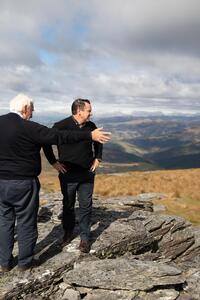
Jerome Sheppard, Deputy Chief Executive Crown Property.
After the challenges we’ve all faced this year, we thought we’d dedicate this issue to celebrating what makes our Crown pastoral leases so special.
At the heart of that is the people, and this issue features stories centred on those caring for this land.
We’re fortunate to work with a wide range of people who are passionate about ensuring we get the balance right when it comes to managing Crown pastoral land.
That includes our staff, leaseholders, farm managers, our colleagues at the Department of Conservation, iwi, regional councils, and a new Minister – to name a few.
Without their support, we wouldn’t have been able to make such big improvements in the way we manage this iconic land.
Practical advice from groups like the High Country Accord and High Country Advisory Group has helped us shape our new pastoral inspection programme.
It’s definitely a team effort and I would like to thank you all for your ongoing support and dedication to the stewardship of this land.
We've made good progress this year, including significantly increasing our visits to pastoral leases and providing greater guidance to our leaseholders. We look forward to building on this in 2021.
This issue features the first of a series of profiles on our pastoral leaseholders. We’ve started with some of our newest leaseholders, James and Jane Paterson, of Robrosa Station, who are passionate about opening up their Wanaka property for others to enjoy. We’re keen to profile more of our lessees, so please get in touch if you would like to feature in one of our upcoming issues.
We also introduce you to Mike Sherman in our pastoral team, and bring you a message from our new Minister for Land Information, Damien O’Connor.
If you have any suggestions about what you would like to see covered in future issues, or have any feedback on this issue, please let us know by emailing pastoral@linz.govt.nz.
From the team here at LINZ, we hope you have happy holidays.
Heoi anō tāku mō nāianei,
Jerome Sheppard – Deputy Chief Executive, Crown Property
Message from our new Minister

Minister O'Connor.
Tēnā koutou, I’m pleased to have this opportunity to introduce myself.
As some of you will be aware, as well as being the Minister for Land Information, I’m also the Minister of Agriculture, Minister for Biosecurity, Minister for Trade and Export Growth, and Minister for Rural Communities.
I’m excited about having a portfolio that has the primary sector front and centre. The sector is more important than ever given the impact of the COVID-19 pandemic on our economy.
Having grown up on a dairy farm near Westport, and sharemilking in my younger years, I’ve always had a strong affinity with farming and the land and enjoy getting out on-farm whenever I can.
I know this year has been a challenging one, given the impact of COVID-19 on our exports and rural communities, but it’s been heartening to see those in the primary sector rise to the challenge.
I appreciate that there’s some uncertainty around the new freshwater rules and what legislative reform will mean for the management of Crown pastoral land.
I’m keen to ensure the new freshwater regulations are practical to implement. I know there have been some concerns about the stock exclusion regulations and the practicality of fencing challenging, steep terrain in the high country. I can assure you that the Ministry for Primary Industries and the Ministry for the Environment (MfE) are working closely with industry groups and regional councils to improve the accuracy of the low slope land map, which shows areas where stock must be excluded from wetlands, lakes and rivers.
MfE is keen to hear directly from farmers, and I encourage all to assist in improving the accuracy of the map by completing a feedback form about your property.
The Crown Pastoral Land Reform Bill – which proposes to end tenure review and ensure everything that is unique and special about the iconic high country is protected, while still allowing pastoral farming to continue – is currently before the Select Committee and again I encourage anyone who has feedback to make a submission.
I hope to soon get out and visit some pastoral leases over the coming months and look forward to meeting with many of you in the coming year.
Until then, I hope you have a good break over the holidays and get to spend some quality time with friends and family.
Nāku noa, nā
Damien O’Connor – Minister for Land Information
Meet our leaseholders - Robrosa pastoral lease
Behind each of our Crown pastoral leases are the hardworking people who care for these iconic landscapes – our leaseholders. We’re keen to celebrate and acknowledge their efforts by profiling them, the great work they’re doing, and the things that make their places unique. Some have farmed these leases for generations as traditional sheep and beef farms, while others have diversified into the tourism and recreation industries. This issue we spoke to some of our newest leaseholders James and Jane Paterson, who hold the Robrosa pastoral lease.
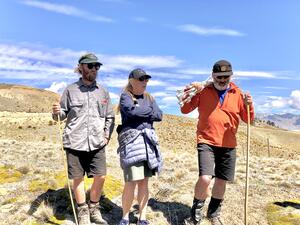
From left, Jack, Jane and James Paterson on the Robrosa pastoral lease.
Like many high country stations, Robrosa is much more than a sheep and beef farm.
The leaseholders, James and Jane Paterson, and their son Jack, took over the Wanaka lease at the start of 2019 and are passionate about sharing the breath-taking spot with others. They offer a range of recreational activities including four-wheel driving, kite skiing and snowmobiling. The lease also hosts the South Island’s biggest New Year’s festival, Rhythm and Alps, which sees tens of thousands of people flood their idyllic front paddock for three days.
“While some people want to lock up their properties and keep it to themselves, we’re the opposite. We want more people to enjoy it. That’s what inspired us to look at what recreational opportunities there were with the property and we’ve got even more we’re keen to explore,” says Jack.
The family also pride themselves on looking after the environment.
“We’re farmers through and through, and we’re always looking at how we can minimise our impact on the land,” says Jane.
That commitment has passed on to their son Jack, 24, who says caring for the land is a trait that’s been “ingrained” from an early age and is “second nature”.
Robrosa is one of several farming operations the family are involved in. James and Jane live on a farm in Jacks Point, own a farm in Northern Southland, where James grew up, and are partners in a dairy farm in the region.
Like many, 2020 has been a tough year due to COVID-19 which took a toll on their farming and tourism operation.
“A lot of people assumed farming was untouched by COVID but that couldn’t be further from the truth,” says Jane.
Despite the challenges, the family feel fortunate to be overseeing this unique property, with the support of their farm manager, Rex Sandford, who has been managing the lease since 2011.
“It’s a special place as it provides us so many opportunities to do a range of things. Not many properties lend themselves to everything from farming through to tourism, recreational activities and festivals,” says Jack.

James and Jack Paterson consider placement of a new track on the lease.
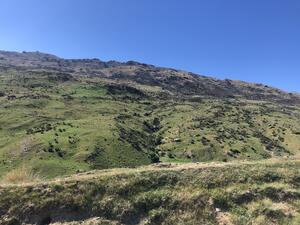
Robrosa pastoral lease.
Did you know
Did you know there is an online map you can use to find out the original Māori place names on, or near, your property?
The Ngāi Tahu Archive Team have created the digital atlas alongside the 18 Ngāi Tahu Papatipu Rūnanga, called Kā Huru Manu, to record and map stories and place names to preserve for future generations.
The atlas includes information about 1,500 traditional Māori place names, ara tawhito (traditional travel routes), and original Māori land allocations in the Ngāi Tahu takiwā (area). There is still on-going research taking place, with at least another 3,000 place names to be added to the digital atlas in the future.
Some of our leaseholders have told us they find this tool beneficial when checking for cultural values on their land before applying for consents.
“It’s an informative, easy-to-use resource with interesting information on travel routes, areas of significance and original place names and their meanings” says Kate Cocks of Mt Nicholas Station.
Ngāi Tahu kaumātua initiated the project in the early 2000s to help protect cultural values on high country stations going through tenure review. However, the idea first came about during the Waitangi Tribunal hearings into the Ngāi Tahu claim in the 1980s.
Information from original survey plans, commonly known as ‘the Black Maps’, previously held by LINZ before being transferred to Archives New Zealand, were incorporated into the atlas using GIS technology.
LINZ provided significant funding towards preserving the original survey maps and reviving their use. Additional funding also came from Environment Canterbury, Ngāi Tahu, Archives New Zealand and Christchurch City Libraries.
To find out more about the atlas, or to search your property, visit: www.kahurumanu.co.nz
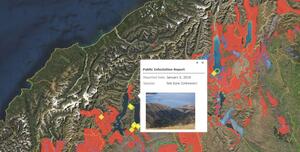
Ngāi Tahu digital atlas, Kā Huru Manu.
Meet the team - Mike Sherman
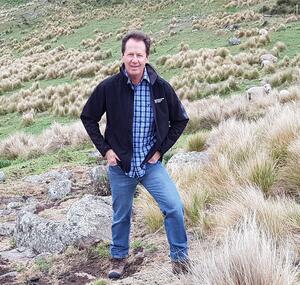
Mike Sherman.
How long have you been a member of the pastoral team and when did you join LINZ?
I’ve been a Portfolio Manager with the pastoral team for eight years. Before this I was working with the survey and titles team.
What attracted you to work at LINZ?
I’ve always had an interest in the South Island high country, so when the opportunity came up to work at LINZ I jumped at the chance.
What do you enjoy most about working in the pastoral team?
I love the variety. No two days, or high country leases are the same. One day I can be working in the office processing a recreation permit or consent application, the next I’m out and about in the high country working with a lessee on the many challenges they face.
Can you tell us a bit about yourself and your background prior to joining LINZ?
I grew up in the small rural town of Waiuku where early on I developed an appreciation for farming through working on the farms of friends and family – something that has stayed with me ever since.
While I shifted away from farm work, I’ve always held roles that have had a connection with the land, including planning, development, surveying, and property management.
What interests do you have outside of work?
My wife and I are kept busy with our two teenage sons. When we can, we enjoy all the outdoor recreation pursuits that the South Island offers including mountain biking, walking the hills and skiing.
I’ve always had a keen interest in aviation and flying. I’m an avid ‘flight simmer’ and most weekends (if the weather’s wet) I can be found at my computer undertaking a helicopter rescue mission in the Southern Alps, or flying a real-world airways route in an A320 airbus to Queenstown or beyond.
One fun thing
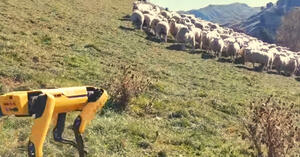
Spot, a robot dog designed by Boston Dynamics. Photo credit: Rocos.
Who wouldn’t mind one of these robot dogs under their Christmas tree?
Check out this video where it was put to the test herding sheep right here in New Zealand.
In the video New Zealand software company Rocos chief technology officer Richard Stinear talks about the benefits this technology could offer the agricultural industry.
Media contact
Email: media@linz.govt.nz